While many compact machines boast all-electric systems, several prototype designs feature alternative options to power larger, heavier-duty equipment.
At Bauma this past October, most mobile machinery makers touted new or prototype designs that feature low-carbon, sustainable systems. Electrification was a hot topic as it has been, but all-electric designs were mostly limited to compact machinery. For mid-size and large equipment, alternative systems took the stage.
Although we only feature four manufacturers’ designs here, many innovative sustainable designs were seen at the event.
Liebherr hydrogen excavator earns Bauma Innovation Award
Lieberr’s R 9XX H2 hydrogen excavator is the first Liebherr hydraulic excavator to be powered by a hydrogen engine. The prototype was developed by Liebherr-France SAS, based in Colmar, France. The machine is powered by an H966 hydrogen combustion engine. It was produced at Liebherr Machines Bulle SA, the Liebherr Group’s engine competence centre in the Swiss canton of Fribourg.
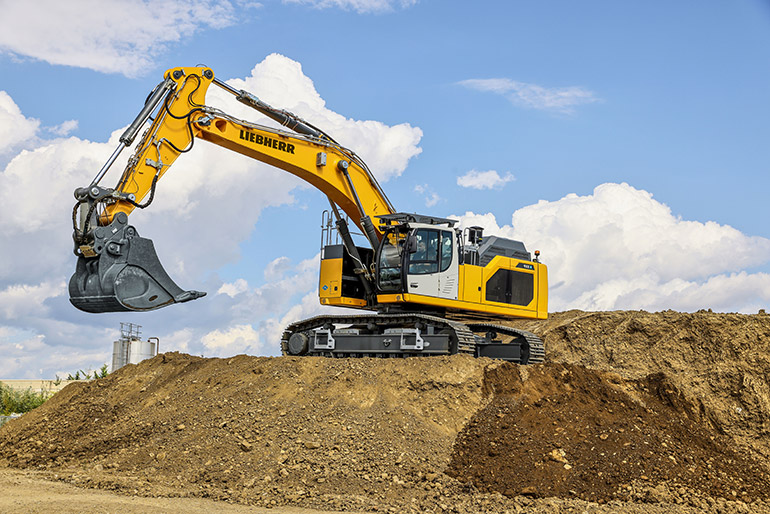
50 ton-operating weight R 9XX H2 from Liebherr may in future offer a robust solution for earthworks and quarrying applications.
In terms of power, dynamics, and responsiveness, the R 9XX H2 hydrogen excavator gives nothing away to any conventionally powered machine. Nor is it dependent on a continuous energy supply either. Henrik Weitze, product manager, said there were no plans to change the hydraulics in the excavator.
The emissions make the difference: On a “tank to wheel” basis, i.e. when used on a construction site, a hydrogen excavator emits almost no CO2. “Cradle to grave” or from production to decommissioning, CO2 emissions are 70% lower than those of comparable conventionally powered excavators.
The R 9XX H2 is powered by a Liebherr H966 hydrogen combustion engine. The engine has six cylinders and uses port fuel injection (PFI), which Liebherr employs along with direct injection (DI) for its hydrogen engines. Liebherr’s components product segment plans to start with the series production of hydrogen motors by 2025.
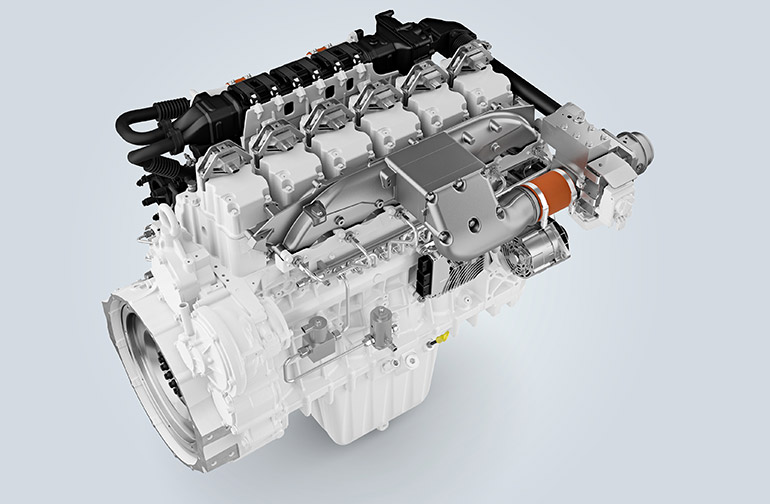
“One of the big advantages of hydrogen is once you have the infrastructure, you can recharge this hydrogen quite fast compared to battery electric driven vehicles,” said Weitze. “We are not as fast as a diesel one, but we are much faster than battery electric vehicles. We see a big advantage if you use the machines, for example, in a two- or three-shift day. You can charge this vehicle without any problem between two shifts or even twice a shift without a problem.”
Weitze added that the hydrogen engine would be ideal for applications that require more power and density, while smaller machines will see the transition to battery electric.
“We’ve built up this prototype to prove that the technology works in hard applications and that the recharge of the machine is no problem. We choose this 50-ton excavator because it’s an excavator which is working in many different applications,” Weitze concluded. “So we can test them in normal road work and small mining applications. We see big advantages for these technologies in rough applications, high altitude, shocks, or dust. We are confident if it works in this excavator, it will work in all other machines we produce.”
Battery power packs a punch
A partnership between Komatsu and Proterra was launched at Bauma as well. Proterra’s battery technology is being used in the development of Komatsu’s first battery-electric middle class hydraulic excavator.
The collaboration represents Proterra’s entry into the off-road vehicle market and its first Proterra Powered battery-electric construction equipment.
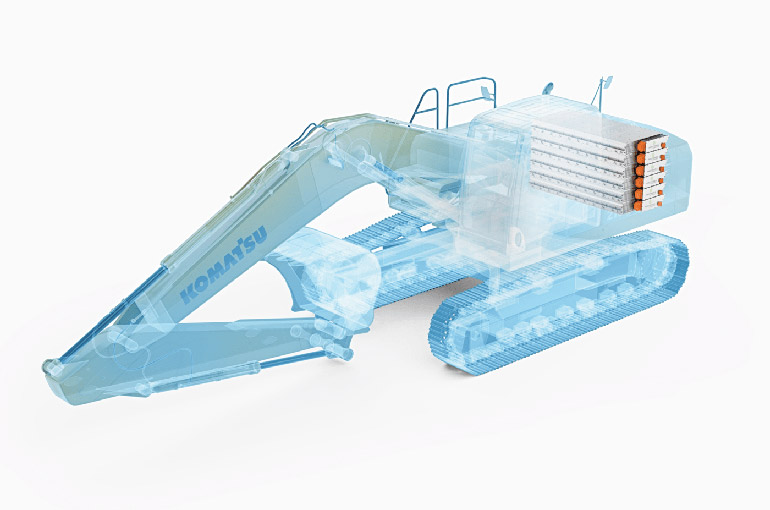
The proof-of-concept electric excavator is expected to reach commercial production in 2023 to 2024. The Proterra battery system powering the electric excavator will feature high energy density and fast charging technology.
This model of hydraulic excavator optimizes the entire body control system by capitalizing on Komatsu’s proprietary coordinating technology. It integrates Proterra’s lithium-ion battery technology with Komatsu’s components, such as the hydraulic pump, controller, and electric motor for work equipment operation. A robust cage structure provides additional protection onboard the vehicle for its battery packs. As a result, Komatsu has achieved digging performance and durability equivalent to those of engine-driven hydraulic excavators. In addition, the high energy onboard the excavator’s Proterra Powered battery system enables operation for up to 8 hours* when fully charged. (*In the PoC test, total operation time ranged from 5 to 9 hours, depending on the workload conditions.)
The electric power makes it possible to work comfortably in various work environments without worrying about noise and exhaust emissions, and is expected to be used for work in urban areas and nighttime construction work. The zero-engine vibration will also help reduce operator fatigue.
Proterra battery packs are designed with safety and durability in mind. They undergo rigorous testing to ensure they can withstand the toughest conditions, making it an excellent choice for Komatsu and the off-road vehicle market.
Electrohydraulic system powers cranes
Japanese crane manufacturer Tadano highlighted five of its AC cranes that are now available with its E-Pack electrohydraulic innovation. The E-Pack, an electrohydraulic system with integrated 32 kW electric motor, provides low-noise and emission-free crane operation. This solution was presented at the last bauma in 2019.
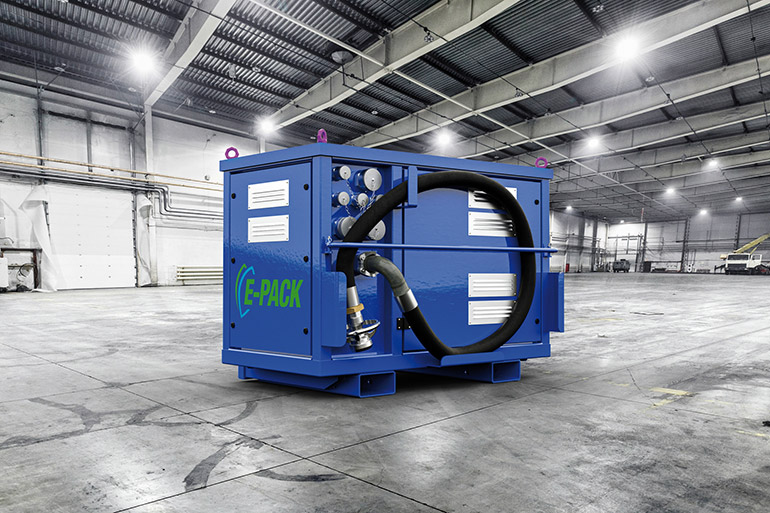
Applications include indoor jobs, projects in urban areas, and residential nighttime work. The E-Pack can be used to carry out all crane functions maintaining the corresponding crane’s maximum lifting capacity. Other performance characteristics are comparable to those achieved with operation with a diesel engine in many work areas. It is powered through the grid via a 400 V/63 A connection.
The E-Pack comes with significant cost advantages as well — the intelligent electro motor control system ensures that only the amount of electric power needed to carry out the required functions will be used. This results in lower operating costs compared to a diesel system and reduces the operating hours of the engine.
Cat pushing forward with electrification
Caterpillar highlighted four electric machine prototypes, including battery prototypes. They include the 301.9 mini excavator, 320 medium excavator, 950 GC medium wheel loader, and 906 compact wheel loader. The machines are powered by Caterpillar battery prototypes.
The Caterpillar-designed batteries will be available to power other industrial applications. Built on proven Cat technology, the lithium-ion battery range features a modular design that offers flexible configurations.
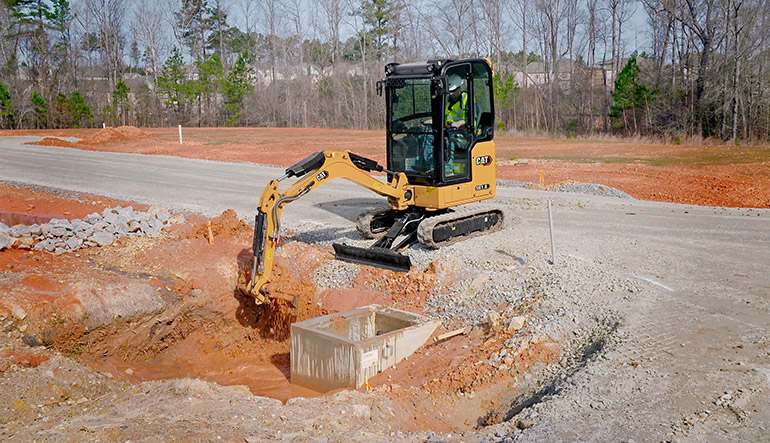
The 301.9 and 906 are expected to be the first available models. The battery on the 301.9 is a Cat 48 V, 32 kWh, with run-time up to 8 hours on a single charge; up to 5 hours in continuous trenching. The 906 battery is a Cat 300 V, 64 kWh, with run-time up to 6 hours on a single charge.
On the hydraulics side, the Cat 336 Hydraulic Excavator includes a powerful hydraulic system that delivers strong digging forces and swing torque to boost production in demanding applications.
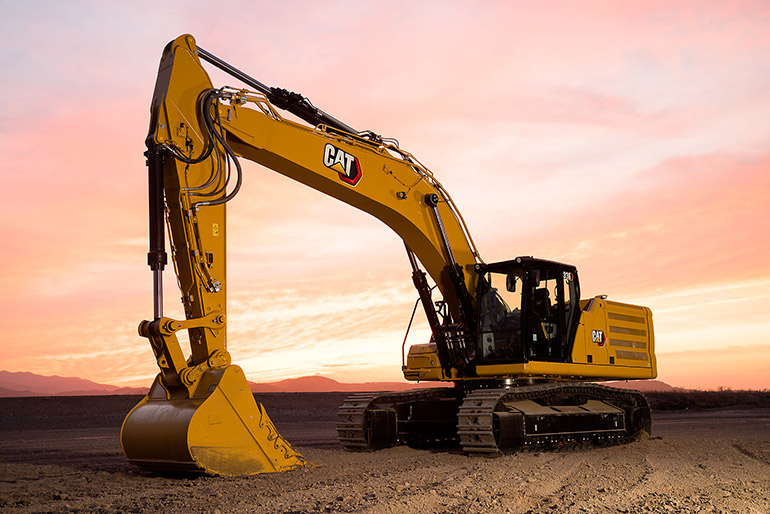
The Cat C7.1 engine features three engine modes to match excavator power to the demands of the job while saving fuel. Power mode delivers maximum power; Smart mode automatically matches engine and hydraulic power to digging conditions to lower fuel consumption. Reducing engine speed to a constant 1,500 rpm, Eco mode minimizes fuel consumption.
Auto hydraulic warmup in cold temperatures gets the machine to work faster and prolongs component life. The air intake filter with pre-cleaner features high dust capacity, and a high-efficiency hydraulic fan offers optional automatic reverse to keep cores free from debris.
Filed Under: Mobile Hydraulic Tips, News, Trending